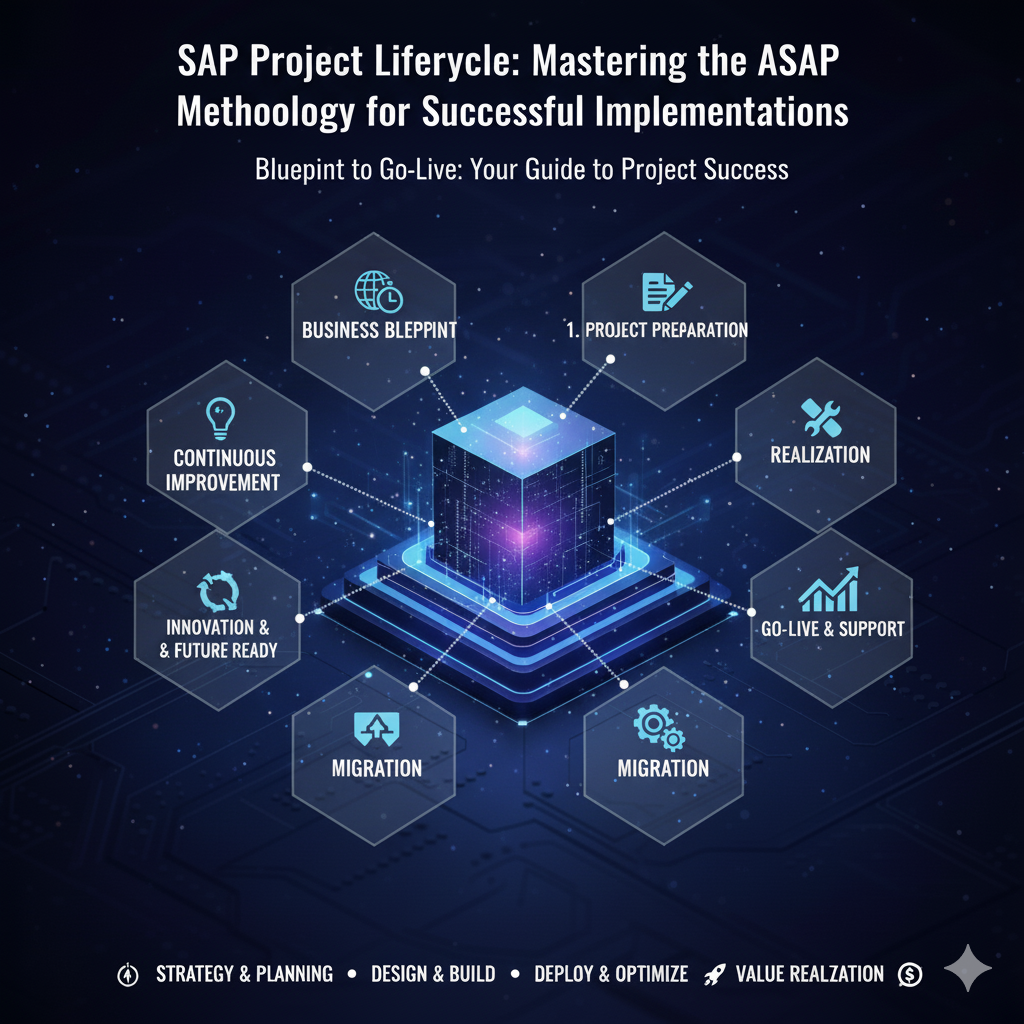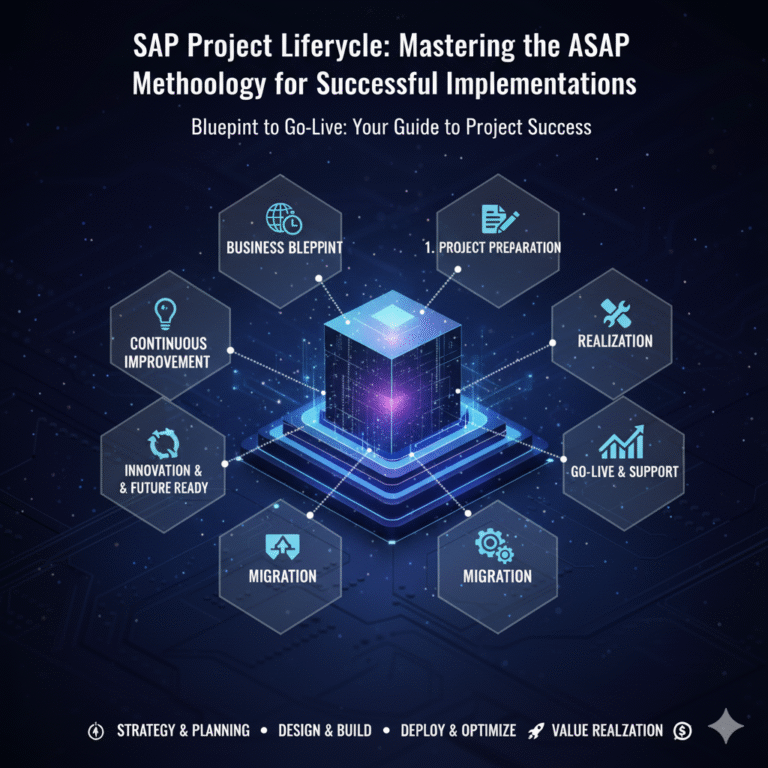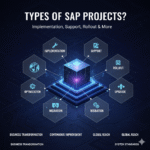Introduction
When organizations implement SAP solutions, one of the most important factors for success is following a proven methodology. Among the widely recognized approaches is the ASAP Methodology (Accelerated SAP) — SAP’s standard implementation roadmap. Designed from years of implementation experience, ASAP provides a structured, step-by-step guide to ensure projects are delivered on time, within budget, and aligned with business goals.
In this blog, we’ll explore the phases of the ASAP Methodology, breaking down each step into clear activities, deliverables, and benefits.

What is the ASAP Methodology?
The Accelerated SAP (ASAP) Methodology is a project management framework developed by SAP to simplify and accelerate the implementation of SAP R/3 and other SAP solutions.
It focuses on:
- Structured project planning and execution
- Risk reduction and issue resolution
- Alignment between business processes and system functionality
- Smooth transition from legacy systems to SAP
The methodology is divided into five distinct phases, each building upon the previous one to ensure a smooth and successful implementation.
Phase 1: Project Preparation
The first phase sets the foundation of the project. It focuses on planning, team alignment, and creating a roadmap for execution.
Key Activities:
- Defining project objectives and scope through a Project Charter
- Establishing standards and procedures for project execution
- Creating a detailed project plan with timelines and deliverables
- Setting up technical requirements (e.g., hardware, PCs)
- Conducting a project kickoff to align stakeholders
- Preparing a training plan for the project team (Level 1 & 2)
- Finalizing team roles, responsibilities, and structure
At the end of this phase, a formal sign-off is obtained, ensuring everyone is aligned before moving forward.
Phase 2: Business Blueprint
The Business Blueprint phase is all about understanding the client’s existing business processes and designing a “to-be” process in SAP.
Key Activities:
- Documenting the current business process using BRD (Business Requirement Documents) and workshops
- Designing the to-be Business Blueprint, which defines how processes will run in SAP
- Establishing the organizational structure (Company, Plant, etc.)
- Defining conversion and interface requirements for third-party systems
- Preparing baseline scope documents and getting blueprint approval
- Setting up training for end users and super users
This phase ensures that the SAP system is configured to align perfectly with the company’s strategic goals.
Phase 3: Realization
In this phase, the SAP system is configured according to the approved Business Blueprint. It involves customizing and testing to ensure all processes work as intended.
Key Activities:
- Configuring the system based on blueprint requirements
- Performing base configuration followed by final configuration
- Conducting unit testing, integration testing, and end-user testing
- Defining authorization roles for secure access
- Preparing user manuals for business teams
The Realization phase ensures that the SAP environment mirrors the planned business processes and is fully functional before final rollout.
Phase 4: Final Preparation
Final Preparation focuses on ensuring readiness for go-live. This includes migration of legacy data, final testing, and user training.
Key Activities:
- Cut-over activities – migrating master data and transactional data from legacy systems
- Conducting stress testing and user acceptance testing
- Training users for day-to-day operations
- Resolving open issues and addressing critical GAPs
- Conducting mock runs to simulate go-live scenarios
This phase ensures that the business is fully equipped to switch to SAP with minimal disruption.
Phase 5: Go-Live and Support
The final phase transitions the business from legacy systems to SAP. The system goes live, and ongoing support is provided.
Key Activities:
- Moving all transports from development to production systems
- Business users begin performing daily transactions in SAP
- Legacy systems are decommissioned
- Providing hypercare support to resolve initial issues
- Transitioning into long-term support and continuous improvement
The Go-Live marks the official start of the SAP journey, ensuring that the business runs smoothly on the new platform.
Conclusion
The ASAP Methodology provides a proven roadmap for successful SAP implementations. By following its structured five-phase approach — Project Preparation, Business Blueprint, Realization, Final Preparation, and Go-Live & Support — organizations can minimize risks, streamline processes, and achieve faster ROI from their SAP investment.
Whether you’re starting your first SAP project or refining an ongoing implementation, understanding the ASAP methodology is essential for success.


